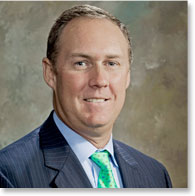NARUC’s Powelson says pause of Clean Power Plan lawsuit doesn’t limit states’ options

Even though more than two dozen states were lobbying for a decision on a lawsuit they filed in 2015 against the Obama-era Clean Power Plan, the U.S. Court of Appeals for the District of Columbia Circuit last week granted a White House request to push pause on that litigation instead.
Nevertheless, one industry regulation expert told Daily Energy Insider on Monday that states still have the same options they’ve had all along.
“Whatever one’s view of the merits of the Clean Power Plan, the Court’s action is not surprising,” said Robert F. Powelson, president of the National Association of Regulatory Utility Commissioners (NARUC), which is comprised of member agencies that regulate energy, telecom and water utilities. The nonprofit also represents the interests of state public utility commissions (PUCs) before the three branches of the federal government.
“This D.C. Circuit Order to hold the case in abeyance does absolutely nothing to change the options each state has always had available via its legislature and agencies,” Powelson wrote Daily Energy Insider in an email.
The U.S. Court of Appeals for the District of Columbia Circuit on April 27 granted a Trump administration request to defer a decision on litigation over the Environmental Protection Agency (EPA) regulation known as the Clean Power Plan (CPP) for 60 days. The court’s order also seeks guidance on whether to send the regulation back to the EPA.
The CPP, considered former President Barack Obama’s biggest policy push against global warming, would replace the United States’ top-polluting coal-fired power plants with renewable energy sources. The lawsuit against the rule was filed the same day the EPA published it in the Oct. 23, 2015 Federal Register.
Chain of events
The April 27 ruling is the latest in a series of high-profile legal proceedings over the CPP, which under the Clean Air Act gave the EPA authority to require states, for the first time, to submit plans specifically designed to limit carbon dioxide emissions from existing fossil fuel-fired power plants.
But states weren’t happy and due to concerns about the EPA’s legal authority, more than two dozen of them, along with several industry groups, sued the Obama administration seeking judicial review of the CPP in the D.C. Circuit.
On Feb. 9, 2016, the U.S. Supreme Court stayed implementation of the rule pending judicial review of the case (State of West Virginia v. EPA, No. 15-1363 (and consolidated cases) (D.C. Cir.)). In September 2016, the D.C. Circuit heard oral arguments in the case, but hasn’t issued an opinion yet as hoped.
President Donald Trump issued a March 28 executive order that “specifically direct[ed] the EPA to review and, if appropriate, initiate reconsideration proceedings to suspend, revise or rescind” the CPP, according to the EPA’s subsequent April 4 Federal Register notice.
“The March Executive Order makes clear there is a non-trivial chance that the EPA will modify or rescind the rule,” Powelson explained.
“Courts typically only address live cases or controversies,” he said. “If the EPA does determine to revise or suspend the rule, by definition, legally the appeal would be moot.”
In its April 4 notice, the EPA says it will “assess whether this Rule or alternative approaches would appropriately promote cooperative federalism and respect the authority and powers that are reserved to the states,” among other considerations it must make per Trump’s executive order.
Thanks to the D.C. Circuit’s recent ruling, the Trump EPA now has 60 more days to figure it out. During that time, parties may file briefs addressing the future of the CPP.
And it’s expected that the Supreme Court also may review some version of the CPP, sources say, setting up the case for further delays.
While states await definitive answers on the CPP, NARUC’s fellow stakeholder group, the National Association of Clean Air Agencies (NACAA), released a document last summer intended to assist states reviewing their options and working on draft compliance plans if the Supreme Court’s stay is lifted.
Possible FERC nominee
NARUC isn’t Powelson’s only industry forum. He has been a commissioner on the Pennsylvania PUC since 2008 and recently became a presumptive nominee for one of the three vacant seats on the five-member Federal Energy Regulatory Commission (FERC), which regulates the nation’s interstate transmission of electricity, oil and natural gas; reviews proposals for building natural gas pipelines; and licenses hydropower projects, among other duties.
Powelson would not comment on whether he was under consideration for a FERC seat nor on what his main priorities would be if he was nominated by Trump and approved by the U.S. Senate to serve on the commission, which now lacks a quorum because only two seats of the five are filled.
He did say during NARUC’s annual winter meetings in February that a lack of a quorum on FERC was a concern for states, which are worried the commission would be hamstrung in making decisions.
Currently, Powelson serves on the Electric Power Research Institute (EPRI) Advisory Council, an appointment he received in 2012. His current term expires August 2018. He also currently serves on the Board of Trustees of Drexel University, a position he’s held since 2013.
